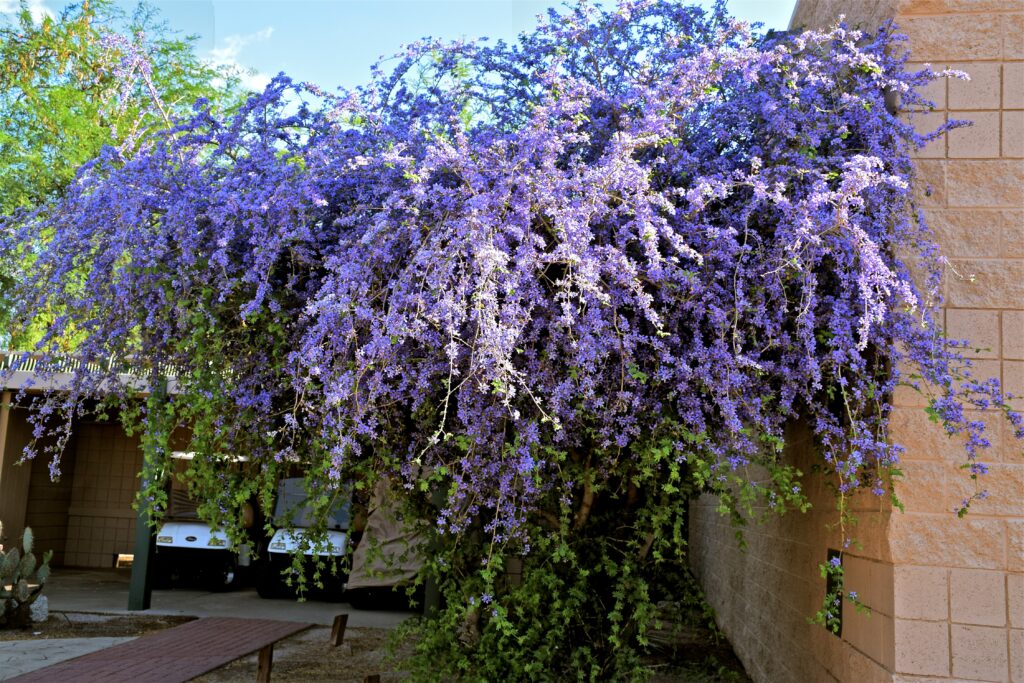Guayacán (Guaiacum coulteri) is a resilient desert shrub, highly tolerant of heat and drought, and prized for its striking deep blue-violet blooms in the summer. Discover why this uniquely colored beauty deserves a place in your landscape.

Description – What does Guayacán look like?
Deep blue-violet, ¾-inch flowers appear sporadically from April to September, clinging tightly to Guayacán’s twisted branches. Deep green leaves are divided into six to ten ½-inch-long oval leaflets that similarly cluster along the branches. The fruit is ½ inch long and has light green, fleshy wings that turn golden upon ripening. The size of Guayacán is often determined by temperature. In areas that experience light frost, the shrub will reach a height and width of about 5 feet. In frost-free areas, it becomes a large shrub or small tree, to 20 feet high. The foliage is evergreen unless damaged by frost.
Native Distribution – Where would I find Guayacán?
This Guayacán species grows on gravelly plains and slopes in the western part of Mexico, from Sonora to Oaxaca.
Culture – What can I expect if I plant a Guayacán?
A location that is sheltered from cold yet receives full sun is most appropriate for Guayacán. The branch tips can suffer damage below 30° F, and the foliage will be severely harmed by temperatures in the low 20s F. Well-drained soil is preferred by this plant, which does well on minimal water. Supplemental irrigation in the summer will encourage heavier flowering. If the foliage sustains frost damage, wait to prune until new growth appears in spring.
Landscape Use – How is Guayacán best used in the landscape?
It is worth the effort to find a warm microclimate for this plant or to cover it on cold nights. The deep blue-violet flowers are stunning and should be featured near a pool or patio. Try planting Guayacán with Creosote Bush (Larrea tridentata) to bring out the similarities in the related shrubs.

Did you know that up to 70 percent of water use is outdoors? That’s why we love desert plants and feature them each month. It’s still a great time to plant non-tropical plants in your landscape, and you can learn more about these and other plants on our Arizona Low-Water-Use Plants page. Visit our page on Planting Trees and Shrubs for tips on plant selection and how to plant properly.
From time to time, Water – Use It Wisely features guest bloggers who write about topics related to water and water conservation. Judy Mielke is a horticulturist, Landscape Architect and the author of one of Water – Use It Wisely’s favorite books. You can find plant descriptions like this and many more in her book Native Plants for Southwestern Landscapes.

